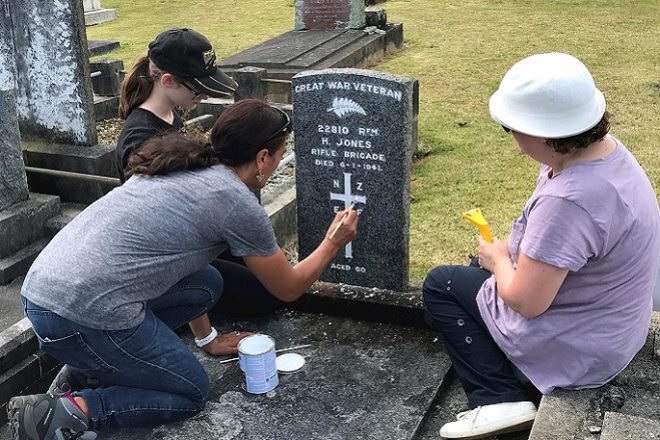即使在经济困难时期,新西兰纪念军(NZRA)志愿者仍继续在社区工作。他们经常自掏腰包来修复在军队服役者的坟墓。
NZRA自2018年以来一直活跃。他们修复坟墓,分享新西兰军事历史的故事。该组织的董事总经理西蒙·斯特罗姆博姆说,他们已经修复了250个墓地中的18万多个坟墓。他们还支持库克群岛和澳大利亚的墓地修复。
但是,这项工作不是免费的。与许多慈善机构一样,由于财务限制,NZRA不得不削减部分项目。其中一个项目是在新西兰各地没有标记的士兵坟墓上寻找和安放墓碑。
到目前为止,NZRA已经在没有标记的坟墓上放置了90多块墓碑。每块墓碑的价格约为1500美元。最近的墓碑是加里波利战役的退伍军人约翰·马威克少校。
新西兰退伍军人事务局获得新西兰退伍军人事务部的支持,但由于资金限制,这种支持有限。因此,NZRA必须支付更换墓碑的全部费用。尽管收到了公众捐款,但该慈善机构今年的资金减少了50%。
因此,NZRA决定暂时停止更换墓碑。取而代之的是,他们将专注于修复整座墓地,这可以花一两块墓碑的费用来完成。
尽管面临这些挑战,但新西兰移民局将继续修复坟墓。在澳新军团纪念日之前,他们正在全国范围内组织工作活动。这些活动涉及学童、家庭、新西兰国防军学员部队和帮助维护数千个坟墓的志愿者。
NZRA认为,与年轻一代分享塑造社区和国家的人们的故事很重要。他们还得到了年轻退伍军人及其家属的大力支持。
新西兰有着丰富的退伍军人参加世界重大赛事的历史。这些故事中有许多不为公众所知,NZRA旨在保护它们。
据估计,新西兰有35万个服务性坟墓,其中许多人无人照料。NZRA认为,任何服役者都不应在维护不善的墓地里埋葬一个无法辨认的坟墓。
要支持 NZRA 的战争坟墓和纪念馆呼吁,请访问他们的网站。


















































-360x245.jpg)











